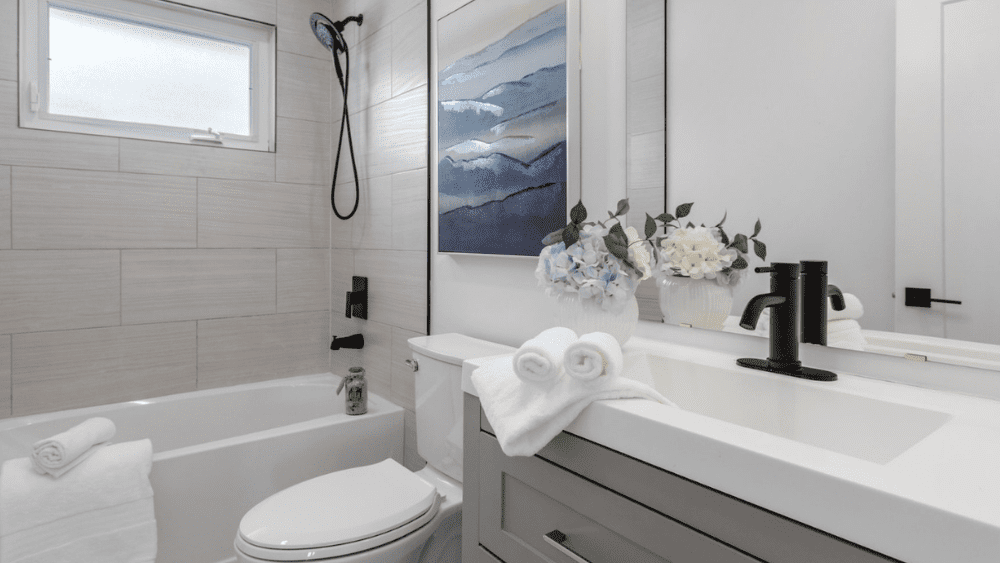In the realm of public restroom management, the advent of bathroom occupancy sensors is a game-changer. These innovative devices are not only redefining the way we approach restroom usage but are also enhancing efficiency in ways previously unimaginable. As we delve deeper into this technology, it's crucial to understand how these sensors work and their profound impact on both users and facility managers.

Understanding Bathroom Occupancy Sensors
At their core, bathroom occupancy sensors are designed to detect the presence of individuals in a restroom. Utilizing technologies such as infrared, ultrasonic, and motion detection, these sensors provide real-time data on restroom usage. This information is invaluable for facility managers who aim to improve restroom accessibility and cleanliness.
For those in the smart bathroom cleaning industry, these sensors can revolutionize cleaning schedules and resource allocation. By knowing exactly when a restroom is occupied and how frequently it is used, cleaning teams can tailor their efforts to ensure optimal conditions at all times.
The Impact on Restroom Management
One of the most significant benefits of bathroom occupancy sensors is their ability to streamline restroom management processes. With accurate occupancy data, facility managers can make informed decisions about maintenance schedules and resource distribution. This not only reduces operational costs but also enhances the user experience by ensuring that restrooms are always in top condition.
Moreover, the integration of such technology aligns perfectly with modern efforts to create bathroom tech for accessibility. By understanding usage patterns, managers can identify peak times and adjust accessibility features accordingly, ensuring that restrooms are readily available to those who need them most.
Enhancing User Experience with Technology
User experience is paramount in any public facility, and restrooms are no exception. Bathroom occupancy sensors play a critical role in enhancing this experience by reducing wait times and ensuring that facilities are clean and well-maintained. For instance, sensors can be integrated with digital displays outside restrooms, informing users of occupancy status and estimated wait times.
This level of transparency not only improves user satisfaction but also reduces congestion during peak usage times. As discussed in smart bathroom for disabled resources, the integration of smart technology can significantly enhance accessibility and ease of use for all individuals.
The Role of Data Analytics
Data analytics is at the heart of the functionality of bathroom occupancy sensors. By collecting and analyzing usage data, facility managers can gain valuable insights into patterns and trends. This data-driven approach allows for more precise and effective management strategies, ultimately leading to improved service delivery.
For example, in facilities where automatic bathroom exhaust fans are used, occupancy sensors can trigger these fans to operate only when needed, thereby saving energy and reducing operational costs.
Challenges and Considerations
Despite their numerous benefits, implementing bathroom occupancy sensors in public restrooms is not without challenges. Privacy concerns are paramount, as users may be wary of devices that track their presence. To address these concerns, manufacturers must ensure that sensors are designed to detect presence without compromising personal privacy.
Additionally, the initial cost of installation and maintenance can be a barrier for some facilities. However, the long-term savings and efficiency gains often outweigh these initial expenses. For inspiration on modern designs that incorporate such technology, consider exploring modern luxury bathrooms.
The Future of Public Restrooms
As technology continues to evolve, the future of public restroom management looks promising. The integration of bathroom occupancy sensors with other smart technologies will lead to even greater efficiencies and user satisfaction. Facilities that invest in these innovations will likely see enhanced reputation and increased user engagement.
Moreover, as discussed in self-cleaning toilet technology, the trend towards automation is set to redefine the standards for hygiene and convenience in public restrooms.

FAQ
What are the primary benefits of bathroom occupancy sensors?
These sensors enhance restroom efficiency by providing real-time occupancy data, allowing for better resource management and improved user experience.
How do bathroom occupancy sensors ensure privacy?
Manufacturers design these sensors to detect presence without collecting personal data, ensuring user privacy is maintained at all times.
Are bathroom occupancy sensors cost-effective?
While the initial installation cost may be significant, the long-term savings from efficient resource management and reduced maintenance make them a cost-effective solution.






